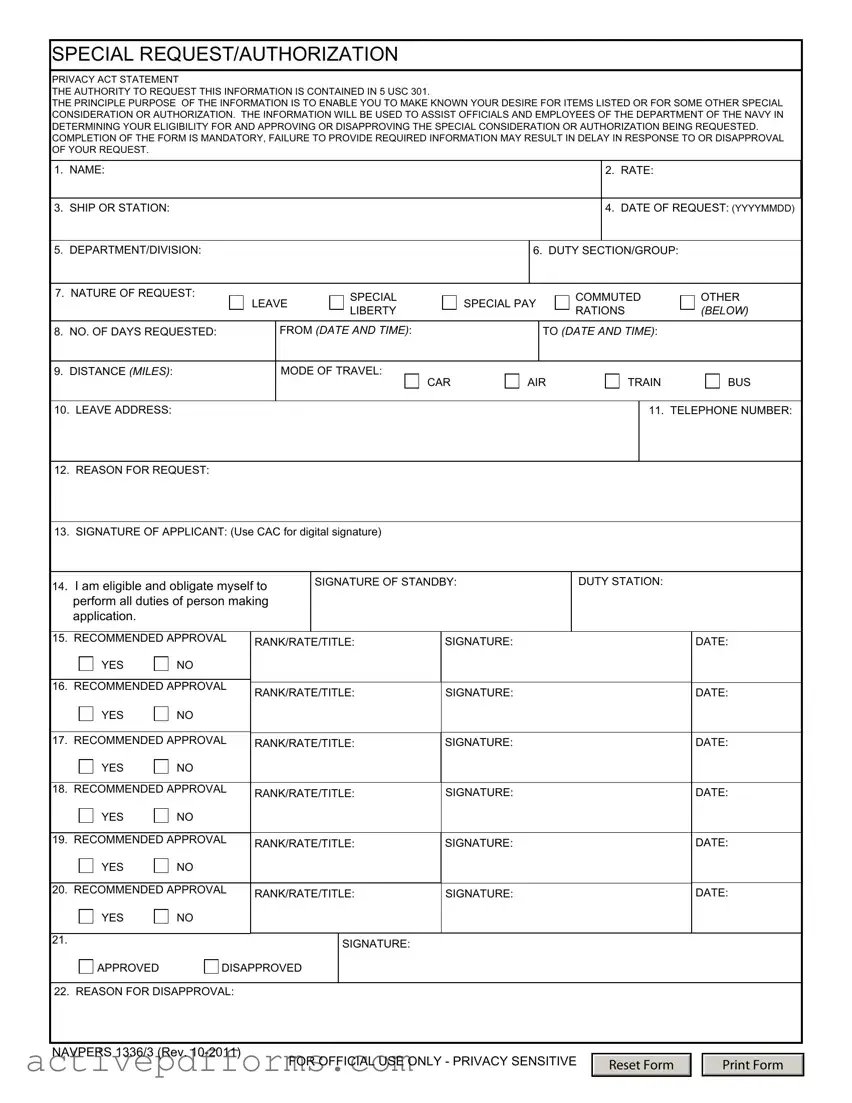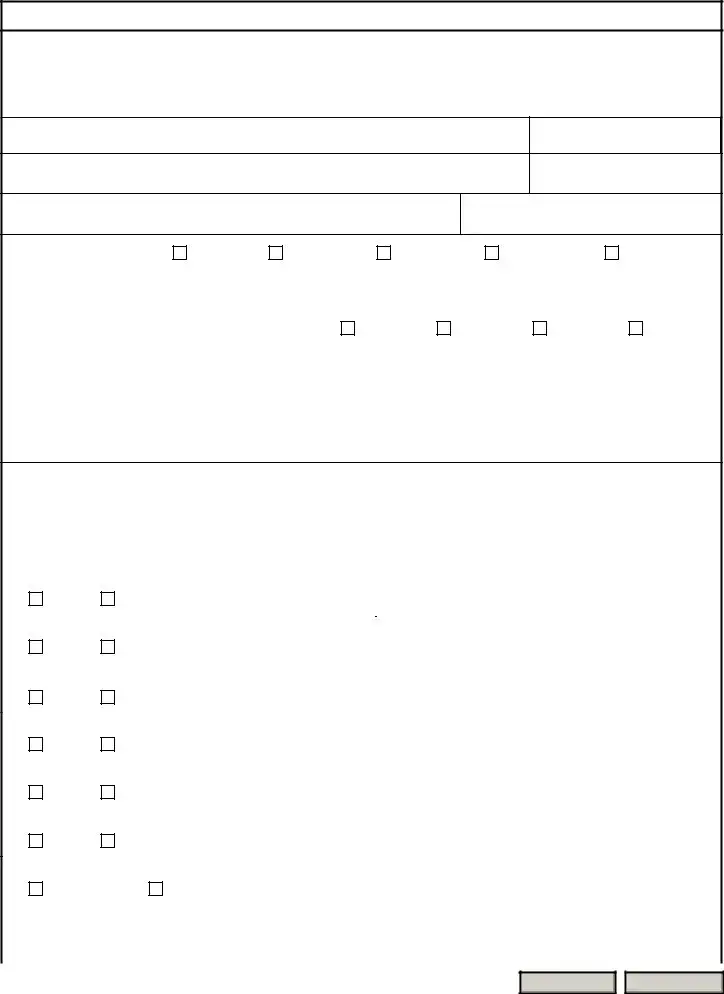Free Navpers 1336 3 PDF Template
The NAVPERS 1336/3 form, serving as a Special Request/Authorization, plays a pivotal role in the professional lives of those within the Department of the Navy. By providing a structured way to request a range of special considerations or authorizations, such as leave or special pay, it ensures personnel can express their needs within the framework set forth by official guidelines. Mandatory completion of this form aids in the swift assessment and fulfillment of such requests, reinforcing the importance of accuracy and thoroughness in its submission.
Edit Navpers 1336 3 Now

